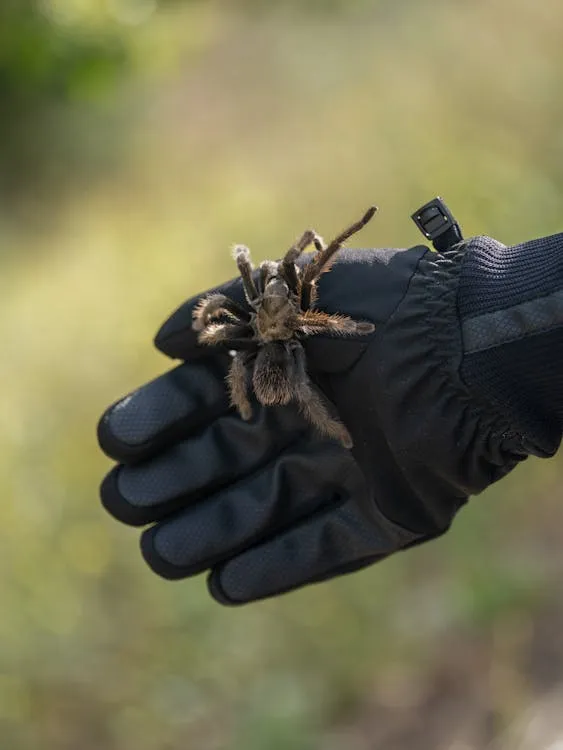What Makes a Tarantula Good for Holding?
Choosing the best tarantula for holding involves understanding their temperament and needs. Not all tarantulas are created equal when it comes to handling. Some species are naturally more docile and less prone to defensive behaviors like biting or flicking urticating hairs. Factors such as the tarantula’s size, speed, and venom potency also play a role in determining how suitable it is for handling. Therefore, researching and selecting a species known for its calm nature is the first and most critical step. This guide will explore species that are generally considered suitable for holding, providing essential information on their care and handling to ensure both the tarantula’s and the handler’s safety and well-being. Understanding the tarantula’s behavior and creating a safe environment are key to a positive interaction.
Temperament and Handling Characteristics
A tarantula’s temperament is a crucial factor. Temperament can range from docile to defensive, and it’s often determined by the species and the individual tarantula’s personality. Docile tarantulas are less likely to bite or display defensive behaviors, making them more suitable for handling. Handling characteristics also include the tarantula’s speed and sensitivity to touch. Some species are skittish and prone to bolting, while others are more tolerant of being handled. It’s important to note that even the most docile tarantulas can bite if they feel threatened. Therefore, slow, gentle movements and careful observation of the tarantula’s body language are essential during handling. Always be mindful of the tarantula’s stress levels and avoid handling if the tarantula seems agitated or uncomfortable.
Docile Species for Beginners
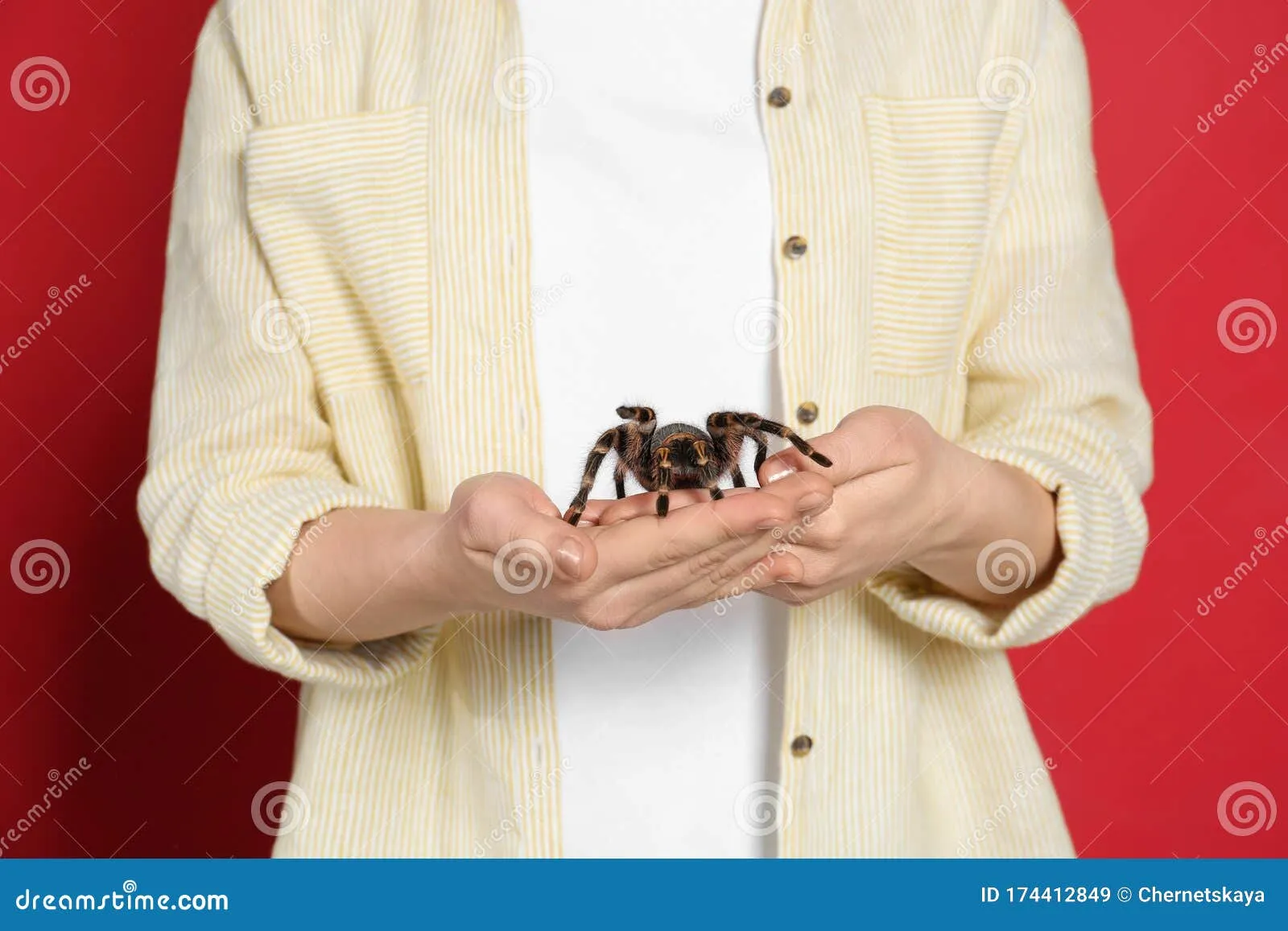
For those new to tarantula ownership, certain species stand out due to their generally docile nature and ease of care. These species are often recommended for beginners because they are less likely to bite and are more tolerant of handling. These gentle giants offer a great introduction to the world of tarantula keeping without the added stress of dealing with a highly defensive spider. However, always remember that individual personalities can vary, and it’s essential to respect the tarantula’s space and comfort level. Always research the specific care requirements of any species before bringing it home, and handle them with the utmost care.
The Chilean Rose Hair Tarantula
The Chilean Rose Hair tarantula (Grammostola rosea) is a popular choice for beginners due to its generally docile temperament and relatively easy care requirements. They are known for being calm and slow-moving, which makes them less intimidating for new owners. They are also quite hardy and can tolerate minor fluctuations in their environment. This species is usually reddish-brown, which makes them very appealing. It is important to note that while they are considered docile, they can still bite if they feel threatened. The venom is not medically significant, but the bite can be painful. Proper handling techniques are essential to ensure a positive experience for both the tarantula and the handler.
Care and Handling
Caring for a Chilean Rose Hair involves providing a suitable habitat, proper feeding, and regular maintenance. They prefer a terrestrial setup with a substrate like coconut fiber or peat moss, and they also need a shallow water dish. Feeding typically involves insects such as crickets or mealworms, which should be dusted with calcium and vitamins. Handling should be done gently and slowly, avoiding sudden movements. Always wash your hands thoroughly before and after handling the tarantula to prevent the transfer of any harmful substances. Additionally, be mindful of the tarantula’s comfort level and avoid handling if it seems stressed. The key to success with this species is consistency, patience, and creating a secure and enriching environment.
Habitat and Setup
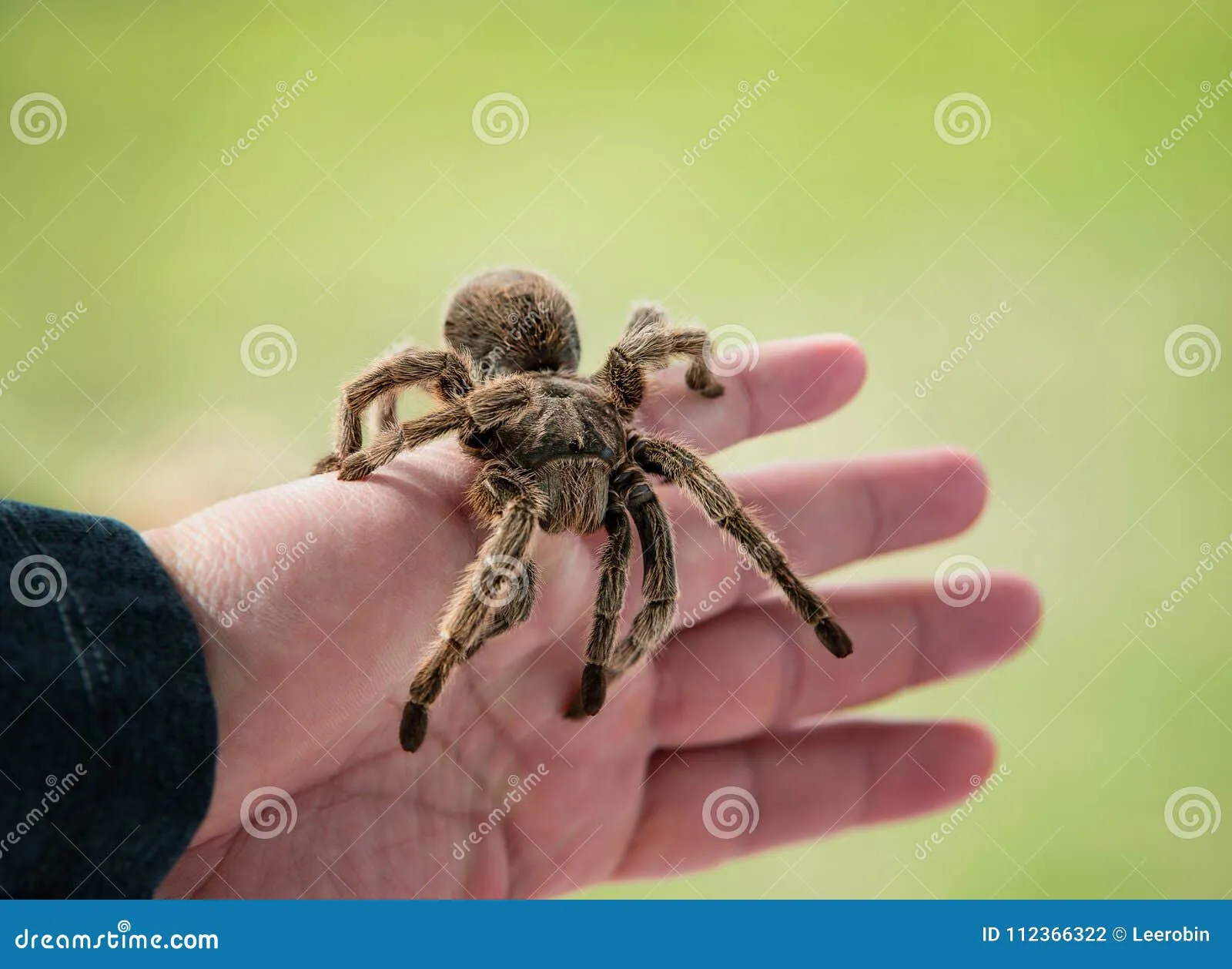
Setting up the ideal habitat for a Chilean Rose Hair tarantula is essential to its health and well-being. A ten-gallon terrarium is often sufficient for adults. The enclosure should include a substrate of about 4-6 inches of coconut fiber or peat moss to allow for burrowing. A hide, such as a cork bark or a half-log, should be provided to give the tarantula a secure place to retreat. The enclosure should also have a shallow water dish for drinking and maintaining proper humidity levels. The temperature should be kept between 75-85°F. Ventilation is important to prevent mold growth. The setup should be regularly cleaned to remove any uneaten food or waste. A well-designed habitat mimics the tarantula’s natural environment. This creates a comfortable and stress-free experience for the spider.
Feeding and Watering
Proper feeding and watering are critical aspects of caring for your Chilean Rose Hair tarantula. Feeding frequency depends on the tarantula’s age and size. Spiderlings should be fed two to three times per week, while adults can be fed once a week or less. The diet should consist of insects, such as crickets, mealworms, or roaches, that are of appropriate size. Always dust the insects with calcium and vitamin supplements to ensure the tarantula receives all necessary nutrients. Fresh water should always be available in a shallow dish. Ensure the water dish is refilled regularly. Remove any uneaten food promptly to maintain a clean and healthy environment. Regular monitoring of your tarantula’s eating habits can help you identify any health issues.
The Mexican Red Knee Tarantula
The Mexican Red Knee tarantula (Brachypelma hamorii) is another popular choice. They are known for their striking appearance, docile temperament, and relatively easy care. They are larger than Chilean Rose Hairs and tend to be less skittish, making them suitable for handling. They are also known for their long lifespan. The Mexican Red Knee is a good option for both beginners and more experienced tarantula keepers. Like the Chilean Rose Hair, they possess urticating hairs that can cause skin irritation if agitated. Therefore, handling should be done with caution and awareness. Despite their calm nature, they can also bite if provoked, although their venom is not considered medically significant. This is why proper handling techniques remain very important.
Care and Handling
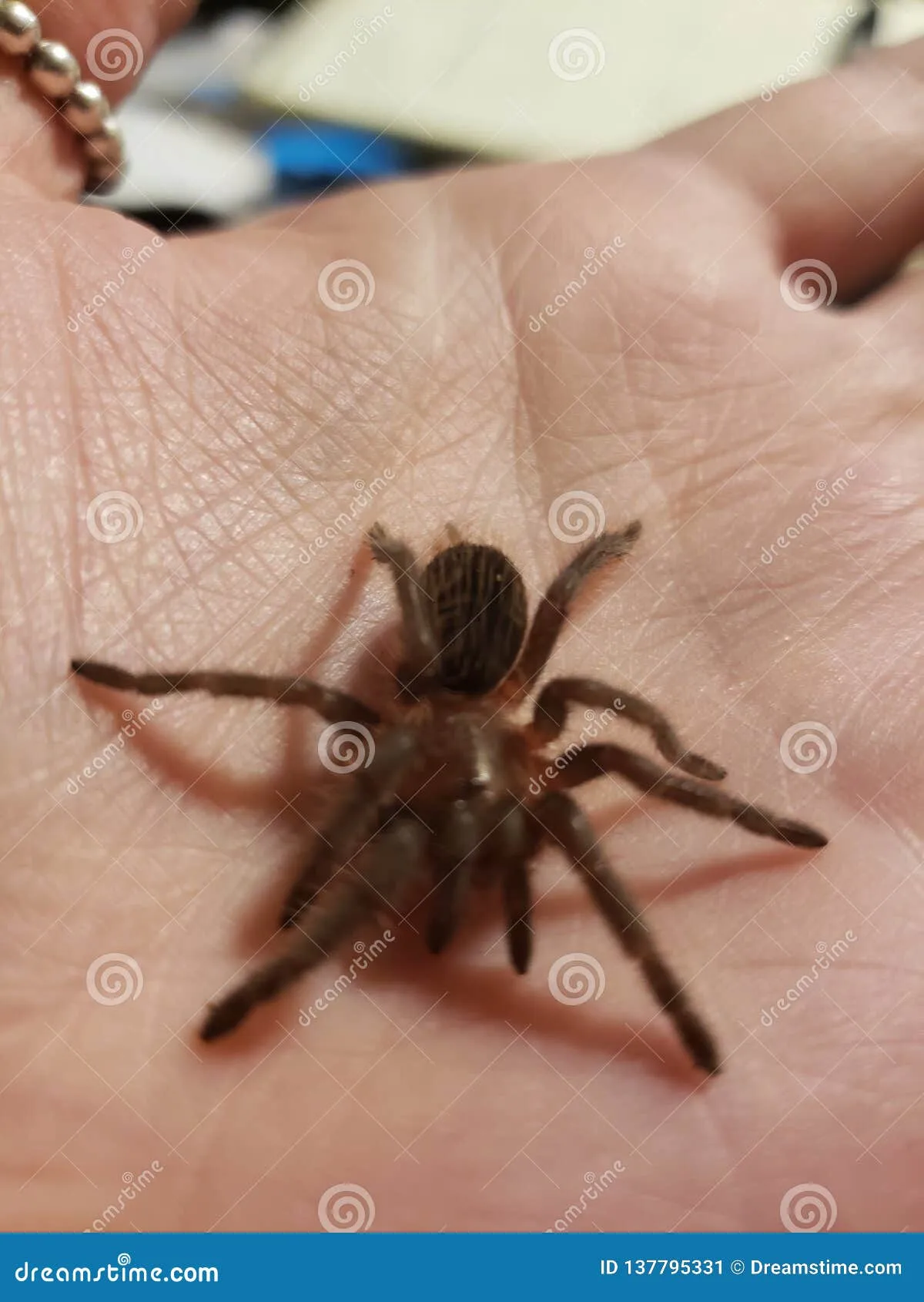
Caring for a Mexican Red Knee tarantula involves providing a suitable environment, appropriate food, and careful handling. A terrestrial setup with a substrate of coconut fiber or peat moss is ideal. They require a hide, such as a cork bark or a half-log, and a shallow water dish. Feeding involves insects, like crickets and mealworms, dusted with calcium and vitamin supplements. Handling should be done with slow, deliberate movements. Always watch the tarantula’s behavior for signs of stress. Avoid handling immediately after a molt, as the tarantula’s exoskeleton is still soft and vulnerable. The approach is the same as other species; gentle and slow handling will enhance the handling experience for both the keeper and the tarantula.
Habitat and Setup
The habitat setup for a Mexican Red Knee is similar to that of the Chilean Rose Hair. A ten- to twenty-gallon terrarium is appropriate. Ensure the substrate depth is about 4-6 inches to allow for burrowing. Provide a hide, such as cork bark or a half-log, to give the tarantula a secure retreat. The temperature should be maintained between 75-85°F, with a slight drop at night. Good ventilation is essential to prevent mold and mildew. Maintaining the correct humidity levels is also important, which can be achieved with a shallow water dish and occasional misting. Regularly clean the enclosure by removing any uneaten food and waste. This ensures your tarantula lives in a clean, healthy, and stress-free environment.
Feeding and Watering
Feeding a Mexican Red Knee tarantula is straightforward. Feed spiderlings two to three times per week, and adults once a week or less, depending on their size and appetite. Insects such as crickets, mealworms, and roaches are suitable, but they should always be sized appropriately. Dust the insects with calcium and vitamin supplements. Fresh water must be available at all times in a shallow dish. Make sure to refill the water dish regularly. Overfeeding can lead to health problems, so monitor your tarantula’s eating habits. Remove any uneaten food within 24 hours to prevent the growth of mold and other contaminants. Proper nutrition and hydration are key to the tarantula’s overall health and well-being.
Other Suitable Tarantula Species
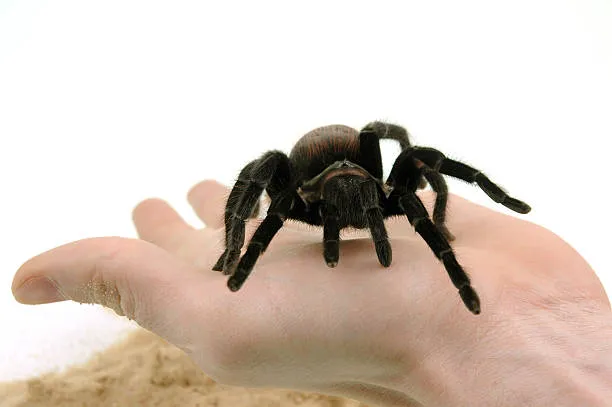
Several other tarantula species can be considered good candidates for holding, depending on their temperament and care requirements. These species often offer a balance of manageable care, beautiful appearance, and a relatively calm demeanor. However, as with any tarantula, research and understanding of the specific species are crucial. Individual tarantulas can vary, so always observe your tarantula’s behavior before handling. Creating a safe and stress-free environment is essential for both the tarantula’s well-being and the handler’s peace of mind. Before acquiring any tarantula, familiarize yourself with its specific needs and behaviors. This will help you provide the best care and enjoy the experience of keeping these fascinating creatures.
The Pink Zebra Beauty Tarantula
The Pink Zebra Beauty tarantula (Grammostola pulchra) is prized for its beautiful appearance and generally calm temperament. They are often less skittish than some other species. The Pink Zebra Beauty is a good choice for those looking for a tarantula with a striking appearance and a manageable temperament. They are not known to be aggressive, making them suitable for experienced keepers. The Pink Zebra Beauty requires care similar to other Grammostola species. They have urticating hairs, so exercise caution while handling. Slow movements and awareness of the tarantula’s body language are very important to prevent stress and ensure a safe interaction. With proper care, they are rewarding pets.
Care and Handling
The Pink Zebra Beauty tarantula thrives with proper care and handling. A terrestrial enclosure with a deep substrate is essential for burrowing. Provide a hide, such as cork bark. The temperature should be maintained between 75-80°F. Feeding involves appropriately sized insects, such as crickets or roaches, dusted with calcium and vitamins. Handling should be limited to only when absolutely necessary. Handle the tarantula carefully and slowly, and be mindful of its comfort level. Never handle the tarantula immediately after a molt. Proper handling will not only ensure the safety of the tarantula but also make the experience more enjoyable for both the keeper and the spider. With these guidelines, the Pink Zebra Beauty can be a rewarding pet.
Habitat and Setup
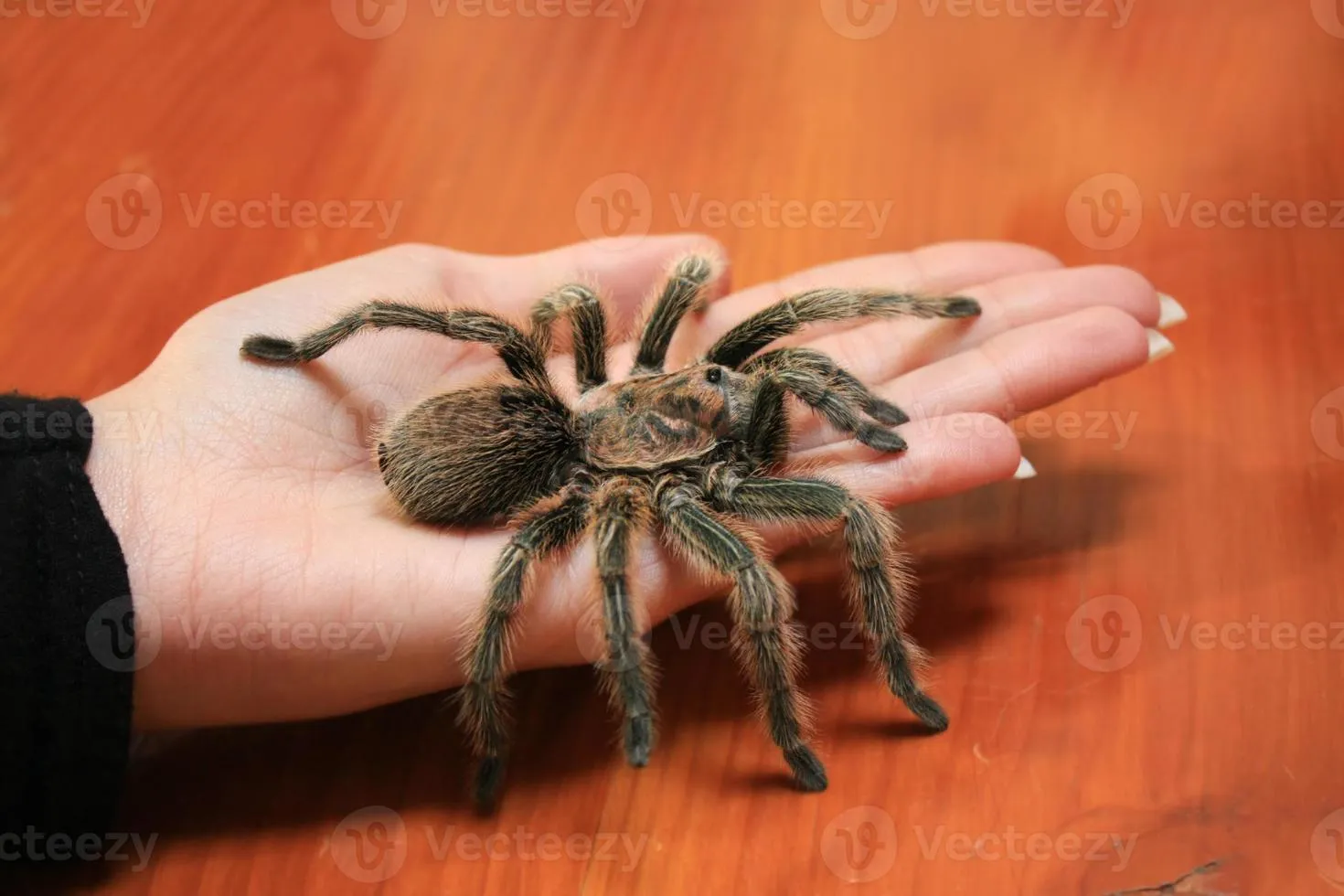
Setting up the habitat for a Pink Zebra Beauty tarantula is straightforward. A ten-to-twenty-gallon terrarium works well. The enclosure should include a substrate of about 6-8 inches of coconut fiber or peat moss to facilitate burrowing. A hide, such as cork bark or a half-log, provides a secure retreat. A shallow water dish should always be available. The temperature should be kept between 75-80°F. Regular ventilation is very important to prevent mold growth. Maintaining the correct humidity is crucial, which can be achieved with the use of a water dish and occasional misting. Regular cleaning is essential. Proper habitat setup is key to the tarantula’s health and well-being.
Feeding and Watering
Feeding and watering a Pink Zebra Beauty tarantula is very important. Spiderlings should be fed small insects two to three times per week, while adults can be fed once a week or less. Insects such as crickets, mealworms, or roaches are good options. They should be dusted with calcium and vitamin supplements. Fresh water is a must. Refill the water dish regularly. Remove any uneaten food promptly. Monitor your tarantula’s feeding habits. Maintaining a regular feeding schedule, ensuring access to fresh water, and proper supplementation of nutrients are essential for the tarantula’s health and longevity. Observing these habits will provide a deeper understanding of the Pink Zebra Beauty’s needs.
Important Safety Tips for Holding
Handling any tarantula requires caution. Always prioritize the tarantula’s well-being and your safety. Before handling, carefully observe the tarantula’s behavior. If the tarantula appears agitated or defensive, it is best to avoid handling. Always wash your hands thoroughly before and after handling to prevent the spread of any bacteria. Never handle a tarantula if you have any cuts or wounds on your hands, as this could lead to infection. Be mindful of the tarantula’s posture and movements during handling. This also helps determine if your tarantula is at risk of being stressed. Taking these precautions will help you make your handling experience safe and enjoyable.
Preparing Your Environment

Preparing the environment is crucial for a safe and successful handling experience. Ensure the area where you will handle the tarantula is clear of obstacles or anything that could harm the tarantula if it falls. A soft surface, such as a bed or a carpet, can help cushion any potential falls. Close all doors and windows to prevent the tarantula from escaping. Have a container ready to safely guide the tarantula back into its enclosure if it becomes uncooperative. Minimize distractions and loud noises to reduce stress on the tarantula. A calm environment is very important for both the handler and the tarantula. With the proper preparations, you can create a safe and stress-free handling experience.
Proper Handling Techniques
Proper handling techniques are essential. Approach the tarantula slowly and gently. Use a soft paintbrush or a similar tool to gently coax the tarantula onto your hand. Avoid grabbing the tarantula or making any sudden movements. When the tarantula is on your hand, support its body gently. Move slowly and deliberately, keeping the tarantula close to the ground. Never handle the tarantula from a great height. Always be mindful of the tarantula’s body language. Avoid handling the tarantula for extended periods. Regular handling sessions will provide more success. Proper handling will lead to a positive interaction.
Avoiding Bites and Injury
While bites from the species mentioned are rarely medically significant, it’s still important to avoid being bitten. Avoid putting your fingers directly in front of the tarantula’s fangs. Be aware of the tarantula’s body language. If it rears up, it is a sign of aggression. Avoid handling the tarantula if it is in a defensive posture. If a bite occurs, remain calm. Gently clean the area with soap and water. Monitor the bite site for any signs of infection. If you experience any severe symptoms, such as allergic reactions, seek immediate medical attention. Knowledge and caution will keep the experience safe.
Essential Equipment and Supplies
Having the right equipment and supplies is crucial for successful tarantula keeping. The equipment will also improve the safety and well-being of your tarantula. Before acquiring a tarantula, you should gather all necessary tools. This will make the process a success. Make sure to plan ahead. Gathering the supplies before you get the tarantula can prevent any problems down the road. Proper preparation can help avoid potential problems.
Enclosure Setup for a Happy Tarantula
A well-designed enclosure is very important for your tarantula. The enclosure should be appropriately sized for the species, allowing ample space for movement and burrowing. A secure lid is a must to prevent escape. The substrate should be appropriate for the species and should support burrowing. Provide a hide, such as cork bark or a half-log, for security. A shallow water dish must always be available. Maintain the correct temperature and humidity levels. Proper ventilation is essential. Regularly clean the enclosure and remove any uneaten food and waste. Providing a good environment will help the tarantula thrive.
Feeding and Watering Supplies
Proper feeding and watering supplies are essential. You will need appropriately sized insects, such as crickets, mealworms, or roaches, depending on the species and size of the tarantula. Always dust the insects with calcium and vitamin supplements. A shallow water dish is a must. Remove any uneaten food within 24 hours. Using the appropriate supplies will help maintain your tarantula’s health. Proper nutrition and hydration are essential for the tarantula’s health and well-being. Be sure to keep an eye on the amount of food you are giving your spider to ensure it is the proper amount.
Long-Term Care and Considerations
Long-term care involves creating an environment that promotes your tarantula’s health and longevity. This means maintaining consistent and appropriate conditions. Creating a plan before acquiring the tarantula will help with the process. Consider the following factors.
Regular Health Checks
Regular health checks are essential for identifying any potential problems early. Observe your tarantula regularly for signs of illness, such as lethargy, loss of appetite, or unusual behavior. Inspect the tarantula’s body for any signs of injury, such as wounds or missing limbs. Monitor the tarantula’s molting process. Ensure that the molting process is smooth and without complications. Maintain a record of your tarantula’s health. If you notice any signs of illness or injury, consult with a veterinarian or a tarantula expert. Early detection and intervention will help the tarantula and ensure a longer lifespan.
Recognizing and Addressing Health Issues
Knowing how to recognize and address health issues is critical for a tarantula keeper. Learn to identify the symptoms of common tarantula ailments, such as fungal infections, mites, or dehydration. If your tarantula exhibits any signs of illness, isolate it from other tarantulas to prevent the spread of any potential diseases. Consult with a veterinarian or tarantula expert for diagnosis and treatment. Provide supportive care, such as maintaining the correct environmental conditions and providing a clean environment. Follow the veterinarian’s instructions carefully and monitor your tarantula’s progress. If you are unfamiliar with tarantula care, it is highly recommended that you consult a veterinarian to make sure you can give your tarantula the proper care.
